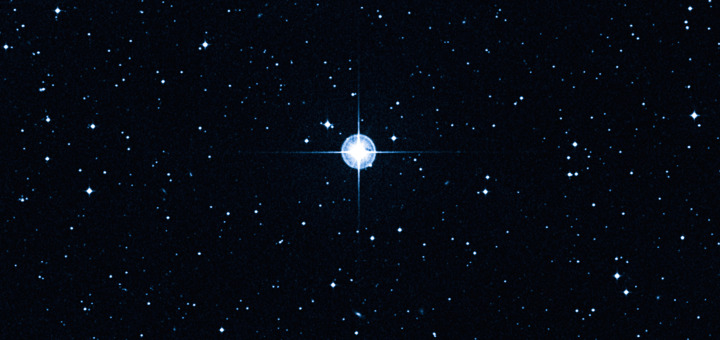

The star HD 140283 is a subgiant star with an estimated age of 14.46 billion years. That might raise an eyebrow or two for those of you who remember that the age of the universe is estimated as 13.77 billion years. It would seem that this particular star, sometimes referred to as the Methuselah star is older than the universe.
There are times when such an unusual finding forces us to rethink what we know about the universe, and generally leads to a revolution in our cosmological theories. This is not one of those times. To understand why, we need to look at just how we determine the age of such a star.
The progression of most stars follows a particular pattern. A protostar gravitationally collapses, which causes hydrogen to start fusing in its core, making it a proper star. The star enters what is known as the main sequence, where it spends billions of years (depending on its size) as a stable star. As it exhausts its hydrogen it enters its final stage as red giant or similar before ending as a supernova/white dwarf/etc., again depending on its size.
Determining the age of a main sequence star is difficult because they don’t change much during this period. There are small changes that can be observed, but they are subtle. It is similar to determining the age of a person. Someone who is 20 looks young. Someone who is 80 looks old. But someone 30 – 50 is harder to gauge, because middle-aged people tend to maintain a similar look for decades. The same is true for middle-aged main sequence stars.
Fortunately for astronomers, HD 140283 is not a main sequence star. It is a subgiant star, which means it has left the main sequence and is heading toward the red giant stage. That fact alone tells us it is an older star, because it is beginning to enter its last stage of life. So we know for sure that it is billions of years old.
Another fact we can use to help determine a star’s age is what’s known as its metallicity. In astronomy “metal” is anything not hydrogen and helium. Hydrogen and helium are the two elements produced by the big bang, so the first stars (so called population III stars) would have contained no “metals”. These first stars would fuse hydrogen and helium in their core (into metals), then end their lives as supernova explosions. The gas and dust remnants of these first stars would then gravitationally collapse to form new stars. These new stars would contain some metals (but not lots), so they would be low-metallicity stars (population II).
With each generation of new stars forming from the remnants of the old, one would expect the metallicity to be higher. So high-metallicity stars are younger than low metallicity stars. Our Sun, for example, is a high-metallicity star, and has an estimated age of 4.57 billion years. HD 140283 is a very low metallicity star, so it likely formed from the remnants of the very first generation of stars. This means it would have formed early in the universe.
As a low metallicity subgiant, one would presume Methuselah would be around 12-13 billion years old. To be more precise than that we need to look at the dynamics of how stars produce energy in their cores, and how that relates to the size and brightness of a star. We have relatively good models, but they rely on careful observations of the star.
The two most important observations are the star’s distance and temperature. Temperature can be done relatively easily by looking at the spectra of a star. Distance is a bit more tricky. Fortunately HD 140283 is relatively close to us, so we’ve been able to measure its parallax. From this we’ve determined its distance to be 190.1 light years away. Knowing its distance and temperature we can determine its luminosity, and that tells us just how much energy the star is currently producing.
But this is where it gets particularly tricky. As described in a paper published earlier this year in Astrophysical Journal Letters (which is behind a paywall, but you you can see a draft version here) the calculated age of a the star depends not only on how how much energy it produces now, but how it has produced energy throughout its lifetime. That rate depends on things like the amount of iron and oxygen the star contains (since those elements can affect the fusion rates).
With careful measurements of the star’s metallicity, particularly iron and oxygen, the authors calculate the age of HD 140283 to be 14.46 billion years, with an uncertainty of 800 million years either way. That may seem to contradict the accepted age of the universe (13.77 billion years), but the uncertainty means the star could be as young as 13.6 billion years, which is within the age of the universe. It could also be as old as 15.3 billion years, which is much older than the universe, but we have lots of evidence to support the age of the universe, so there is no reason to take this star’s oldest possible age as evidence against the universe being 13.77 billion years old.
But even the star’s youngest age tells us something about the early period of our universe. It is likely that this star formed when the universe was less than 170 million years old, and it is a second generation star. This means the first stars must have formed very early, lived relatively short lives, and their remnants cooled relatively quickly in order to have the right conditions for a star like HD 140283 to form.
This article comes to you from Brian Koberlein at One Universe At A Time.